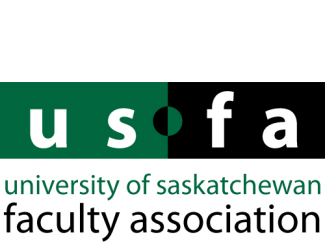How have choices by Senior Administrators and the Board of Governors contributed to an ongoing environment of competition and mistrust at this university?
Much of the current state of turmoil at the University of Saskatchewan can be attributed to choices made by a small elite group of senior administrators (Provost’s Committee on Integrated Planning [PCIP]). Everything, from choosing the assumptions on which the structural deficit is based, to the process by which University programs and services would be evaluated, flows from this group. PCIP took the place of the Budget Committee of Council, which was an advisory body comprised of 10 to 12 members of Council and a designate of the President. The choice to eliminate insight and input of council members, who are faculty, students and senior leadership from across campus, into the finances of the University dramatically reduced transparency and helped to create the current environment of competition and mistrust on campus. More and more, Senior Administrators and the Board of Governors are choosing to apply a corporate approach to the University – with less transparency, less discussion and more fear.
It’s about choice.
Why did Senior Administrators and the Board of Governors choose to embark on a program prioritization process when the U of S has been setting institutional priorities for more than a decade?
TransformUS is the process that has been used to assess all U of S academic programs and services. The method of assessment chosen by Senior Administrators and the Board of Governors for this initiative was from the United States and created by Robert C. Dickeson – Prioritizing Academic Programs and Services: Reallocating Resources to Achieve Strategic Balance. The Dickeson model is a method for assessing programs and services at a university so that resources can be reduced and reallocated to support the strategic directions of the institution. It has been described by its proponents as a rigorous, effective, and academically responsible approach to the changing academic environment, and by its detractors as a deeply flawed and inappropriate practice, biased against faculty, that all but precludes useful outcomes.
Browse Through Robert Dickeson’s Book
It is difficult to argue with the idea of a comprehensive review of university programs to make sure they are continuing to meet the goals of the university and of higher education in general. A vibrant academic institution continuously evolves. However, since 2001, the U of S has articulated and determined its priorities and worked towards its goals by way of Integrated Planning. Why, then, do we need a new process if we already have a way to review programs? In the context of this institution, TransformUS is not about program prioritization process. It is about cutting $20-25 million from the operating budget of the University.
The rationale for applying the Dickeson model has been that it is “a proven methodology for reallocating resources in tough times.” Now that the university appears to be in a healthy financial position, should university administrators choose a new model for all future and ongoing operating budget adjustments?
It’s about choice.
Why have Senior Administrators and the Board of Governors set aside huge amounts of operating funds for planning while at the same time eliminating jobs?
[/text_output][gap size=”2em”][vc_row_inner][vc_column_inner width=”1/2″ fade_animation=”in” fade_animation_offset=”45px”][text_output]In all of the financial information for the U of S, you will see that funds are being set aside “to support fundamental change at the University in line with its priorities as expressed in the Integrated Plan” (Academic Priorities Fund). In 2012-13 $7.1 million was budgeted for the Academic Priorities Fund, last year (2013-14) the figure was $7.7 million and this year (2014-15) it’s $7.5 million. Decisions about spending these funds are made by a small elite group of Senior Administrators (PCIP) and reported long after decisions are made.
The Final Report of the Second Integrated Plan contains a Summary of Funding from the Academic Priorities Fund (APF) for the period May 1, 2008 to April 30, 2012. This summary shows one time funding of $19.6 million and permanent funding of $4.8 million committed from the APF. With an annual operating budget allocation of more than $7 million to the APF for the 3rd Integrated Plan there is a sizeable amount of operating budget funding being set aside while jobs are being eliminated.
This is not about financial sustainability.
It’s about choice.
How much of this current ‘easing off the gas just a bit’ is due to progress to date (much of which was presumably forecasted) and how much is due to more level heads pointing out that the sky is not falling (and perhaps never was)?” Comment by RealTransformUS (June 20, 2014) on http://words.usask.ca/transformus/

